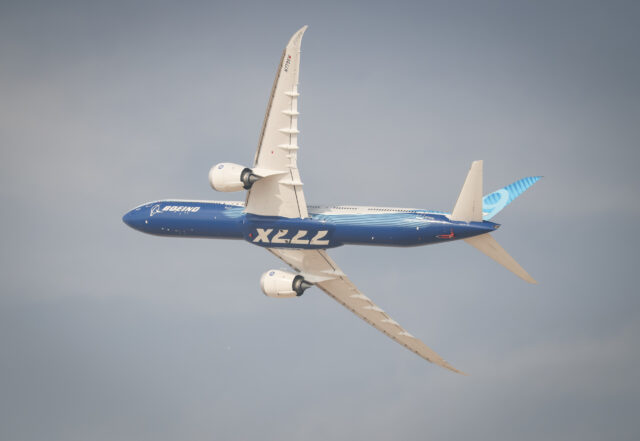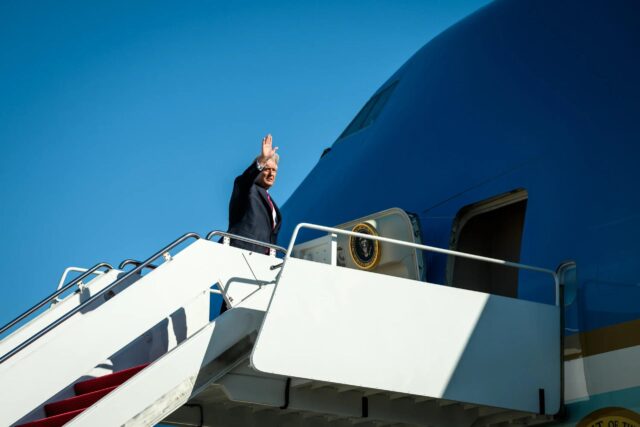The rise of the eVTOL aircraft

Electric vertical take-off and landing is one of the very latest innovations in the aerospace industry. Also referred to as a ‘flying car’ or ‘air taxi’, one of these giant drone look-alikes could soon be ferrying you to your destination. Jim Scott, co-founder and managing director of Artemis Aerospace, has a look at a technological achievement which you might spot soaring over your house before too long.
We’re used to helicopters whirring overhead, carrying businesspeople to meetings, celebrities to lunch or an air ambulance crew on their way to an incident. We may have spotted a drone as it’s sent up to take an aerial photograph for an estate agent, and any day now we’re expecting one to drop off our latest online parcel order.
However, you may not know this technology has advanced so much that an eVTOL aircraft for the transportation of people now has serious commercial potential, and there are a number of prototypes being designed and developed. In 2021, $6.9 billion was committed to eVTOL startup conceptualisation and manufacture, and this is now coming to fruition, with at least seven versions due to take to the skies in the next few years.
eVTOL flying car
The phrase ‘flying car’ may bring to mind an image of Chitty Chitty Bang Bang, but the kind of blueprint produced at R&D departments throughout the aviation industry is light years ahead. Major advances in electric propulsion brought about by the rise of sustainable battery-operated cars have given rise to the idea of a quiet, environmentally friendly, and less expensive way of transporting goods and people.
eVTOL aircraft work by electric motors with fixed-pitch propellers, typically using multiple advanced lithium-ion batteries which enable short flights of up to 200 miles. As with cars, charging the batteries will obviously be a crucial part of commercial viability for eVTOLs, as too much AOG (Aircraft on Ground) time would not be market-worthy. Battery systems that can recharge to 100 per cent in half an hour are currently being investigated.
At the moment, there are three main ways in which eVTOL design is evolving. The first involves multiple rotors which generate forward thrust and upward lift. The second uses propellers to provide lift, like a helicopter, and then once it’s in the air changes to using a fixed motor for forward propulsion. The third is known as a tilt-thrust; the aircraft rises via propellers which change position and, once airborne, fixed wings take over. eVTOLs can hover, take off and land vertically at a base known as a vertiport, removing the need for a runway in areas where space is at a premium, and therefore ideal for congested cities.
eVTOL aircraft have the potential to revolutionise transport. Aside from personal business and pleasure travel, there are endless possibilities for their utilisation. Almost anything which a helicopter can do, an eVTOL aircraft can do more cheaply and more sustainably. Search and rescue operations could find them particularly expedient, conveying casualties safely and rapidly from earthquake or hurricane disaster zones. They are already transforming delivery services; in 2020 an eVTOL drone delivered Covid test kits to the Isle of Mull, removing the need for human contact in the middle of a global pandemic. The German aircraft manufacturer, Volocopter GmbH, has developed a cargo-carrying eVTOL aircraft which can travel for 40km carrying up to 200kg.
Film production teams, previously reliant on noisy helicopters for dramatic overhead shots, will have the option of a quiet camera operated remotely from the ground. The agriculture sector will benefit from multiple applications including crop-spraying and delivering food to animals in remote locations, and there are clearly limitless military possibilities. The USAF has already committed millions of dollars to the funding of eVTOL research.
Safety first
What about safety issues? The idea of our sky populated with air taxis may cause concern and it’s worth noting that despite years of research, driverless cars have still not exploded onto our roads in the way that was once predicted. Sky travel doesn’t have hazards such as a tyre blow-out at speed or a child running unexpectedly into the road, but manoeuvring round high-rise buildings and other eVTOLs in densely populated cities could be problematic, and the ever-present danger of a bird strike is much more likely at lower altitude.
It’s thought the relatively low level attained for short journeys wouldn’t prove dangerous to large aeroplanes, although air traffic control would need stringent guidelines for take off and landing. A system has been developed by EASA (European Aviation Safety Agency) called U-space which is intended to manage UAS (Unmanned Aerial Systems) traffic, and in January 2023 EASA published its first set of compliance and guidance material covering the implementation of U-space operations in the EU. However, the rigorously controlled aerospace industry will need considerably more input to ensure global endorsement and adherence. For example, the need to demonstrate how an eVTOL will manage in the event of a mechanical failure in mid-air.
The thought of being able to step into a vertiport and take off in an air taxi for the other side of London is a compelling vision; soaring over the chaos of the traffic jam on the Westway, the roadworks on Hammersmith Bridge and the squash of the multitudes streaming down tube station escalators. It’s not quite here yet, but with exciting and futuristic aircraft currently undergoing trials, it will only be a matter of time before that vision becomes a reality.
Subscribe to the FINN weekly newsletter
















